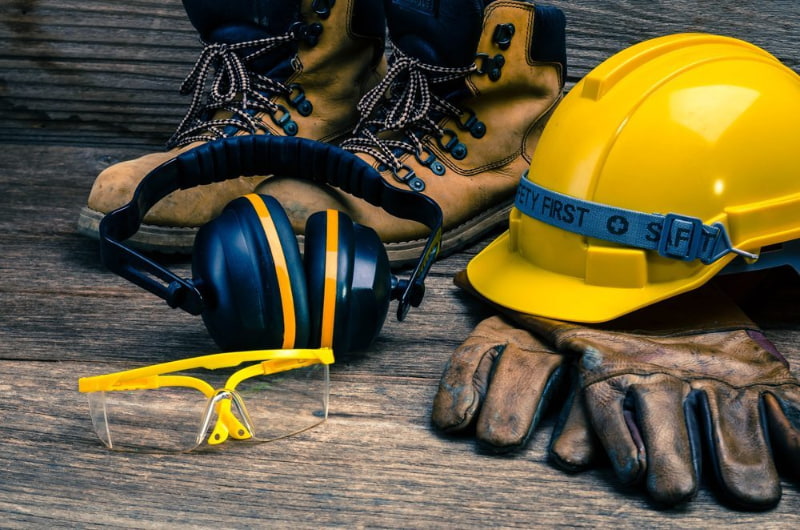In the construction industry, personal protective equipment is regarded as the last line of defense when it comes to protecting workers from potential injuries on the worksite. Not only is it necessary for you and your coworkers to have protective clothing, but the employer is obliged by the law to keep you safe while performing your tasks.

Personal protective wear is typically designed following some pre-set safety standards in order to ensure that it has the right type and amount of protection. And that’s exactly what I’m going to talk about in today’s blog post – let’s take a look at the important factors you’ll need to consider when choosing every piece of personal protective wear.
Hands
The right type of gloves will enable you to move your fingers freely without compromising the safety of your hands. When shopping, look for gloves that are comfortable but allow you to feel everything that you get in contact with. There are different types of gloves available today and typically the nature of the hazard and the operation involved should determine your choice. Gloves that are made of rubber or a rubber-like polymer, such as nitrile, are the best choice to protect your hands from hazardous chemicals.
Nitrile gloves provide protection from chlorinated solvents such as trichloroethylene and perchloroethylene. Although they are mainly intended for jobs that require dexterity and sensitivity, nitrile gloves can stand up to heavy use even after prolonged exposure to substances that may cause other gloves to deteriorate. This material offers the ultimate protection when working with oils, acids, greases, caustics, and alcohols. However, they are not recommended for use with strong oxidizing agents, aromatic solvents, acetone, and ketones. Make sure that you inspect your protective gloves before each use to ensure that they are not punctured, torn or made ineffective in any way.
Head
Hard hats are the way to go no matter the environment you are working in, as they offer the highest level of protection. They have a suspension to ensure the hat fits the shape of your head well and that it stays on it. Some people want to get creative with their helmets and paint something on them but that is not always a good idea as the extra layer of paint can damage the shell. Instead, you can opt for stickers. Putting something underneath the helmet can tamper with the suspension, but as long as you have it strapped down to your head you are going to be fine.
Respiratory
If you are working in a place where dust is prevalent, a face/ dust mask is a cheap option that will make sure you don’t inhale any of it. This type of mask can also protect you from inhaling any vapors, smoke or powder. If you are working in a place with more severe toxins floating in the air, then go for a full face mask as it will sit tightly on your face to ensure your nose is well protected.
Hearing & Sight
If your work involves you working near a loud machine, earplugs or mufflers are the personal protective wear that you should definitely be equipped with. Mufflers will muffle the sound around you to a somewhat reasonable level, but plugs will help to block it off almost completely. Remember that disposable or cotton earplugs are not a safe option in these settings. If you are working in a place where a lot of welding is happening or metal parts are flying around, a good pair of goggles or a welding helmet is of utmost importance. There’s a high possibility to lose your sight if you somehow get injured, as the eye is a very sensitive and complex organ.
Feet
To best protect your feet you are going to need either composite or steel-toed shoes that have puncture resistant-soles. Steel-toed shoes are the best option if you are lifting heavy objects. Composite ones will protect you from heat and electricity, while slip-resistant footwear is always a good idea regardless of the environment that you work in.
























